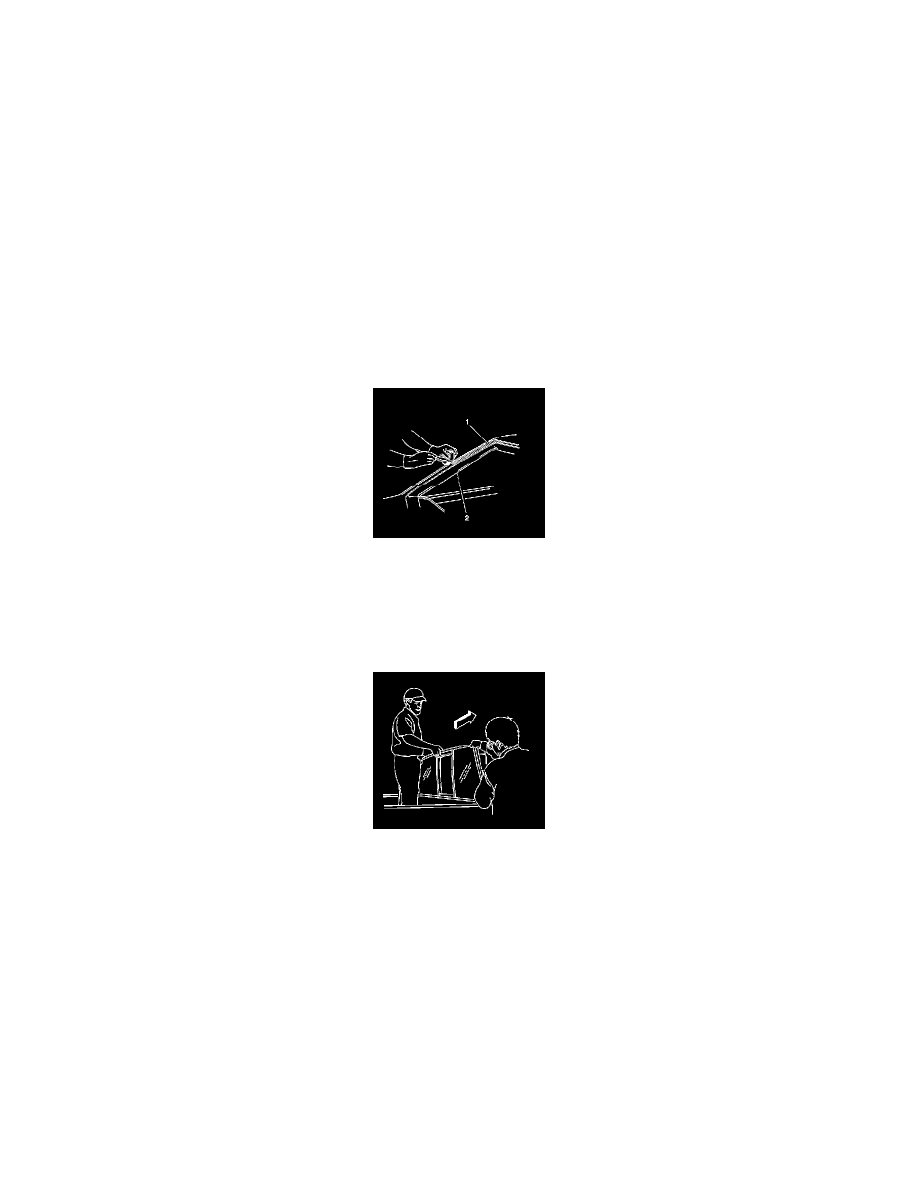S15/T15 Sonoma P/U 2WD L4-2.2L VIN 5 Flex Fuel (2001)

*
The window reveal molding
9. Inspect for any of the following problems in order to help prevent future breakage of the window:
*
High weld
*
Solder spots
*
Hardened spot weld sealer
*
Any other obstruction or irregularity in the pinchweld flange.
Installation Procedure
Important: If corrosion of the pinchweld flange is present, or if sheet metal repairs or replacements are necessary, refinish the pinchweld
flange in order to present a clean primer only surface. If paint repairs are required, mask the flange bonding area prior to the application
of the color coat in order to provide a clean primer only surface. Materials such as BASF DE17(R), DuPont 2610(R), Sherwin-Williams
PSE 4600 and NP 70 and Martin-Semour 5120 and 5130 products are approved for this application.
1. Inspect the condition of the rear window opening and the urethane adhesive bead in order to determine which installation method you will use.
2. Remove all traces of broken glass from the vehicle.
3. Clean around the edge of the inside surface of the rear window with a 50/50 mixture of isopropyl alcohol and water by volume on a dampened
lint-free cloth.
4. After repairing the opening as indicated, shake the pinchweld primer (black #3) for at least 1 minute.
Caution: Failure to prep the area prior to the application of primer may cause insufficient bonding of urethane adhesive. Insufficient
bonding of urethane adhesive may allow unrestrained occupants to be ejected from the vehicle resulting in personal injury.
5. Use a new dauber in order to apply the pinchweld primer (black #3) to the surface (1) of the bonding area on the body only. Cover all nicks and
scratches.
6. Allow the primer to dry for approximately 10 minutes.
7. With the aid of an assistant, determine the correct way to position the rear window in the opening. Do NOT adhere the window to the opening at
this time.
8. Use masking tape in order to mark the location of the rear window in the opening.
9. Slit the masking tape at the top edge of the rear window.
10. With the aid of an assistant, use suction cups in order to remove the rear window from the opening.
11. Place the rear window with the inside facing up on a clean, protected surface.
Important: Do not remove all traces of the adhesive. Remove all mounds or loose pieces of urethane adhesive.
12. If you are reinstalling the original window, remove all but a thin film of the existing urethane adhesive from the window surface using a utility
knife or razor blade scraper.
13. For the extended method, remove all but approximately 2 mm (3/64 in) of the existing bead of adhesive from the pinchweld flange.
14. Clean around the edge of the inside surface of the window with a 50/50 mixture of isopropyl alcohol and water by volume on a dampened lint-free
cloth.
15. Shake the pinchweld primer (black #3) for at least 1 minute.
Important: Do not apply the (black #3) primer to the existing bead of the urethane adhesive. Apply the primer only to nicks, scratches or
the primed surfaces.
